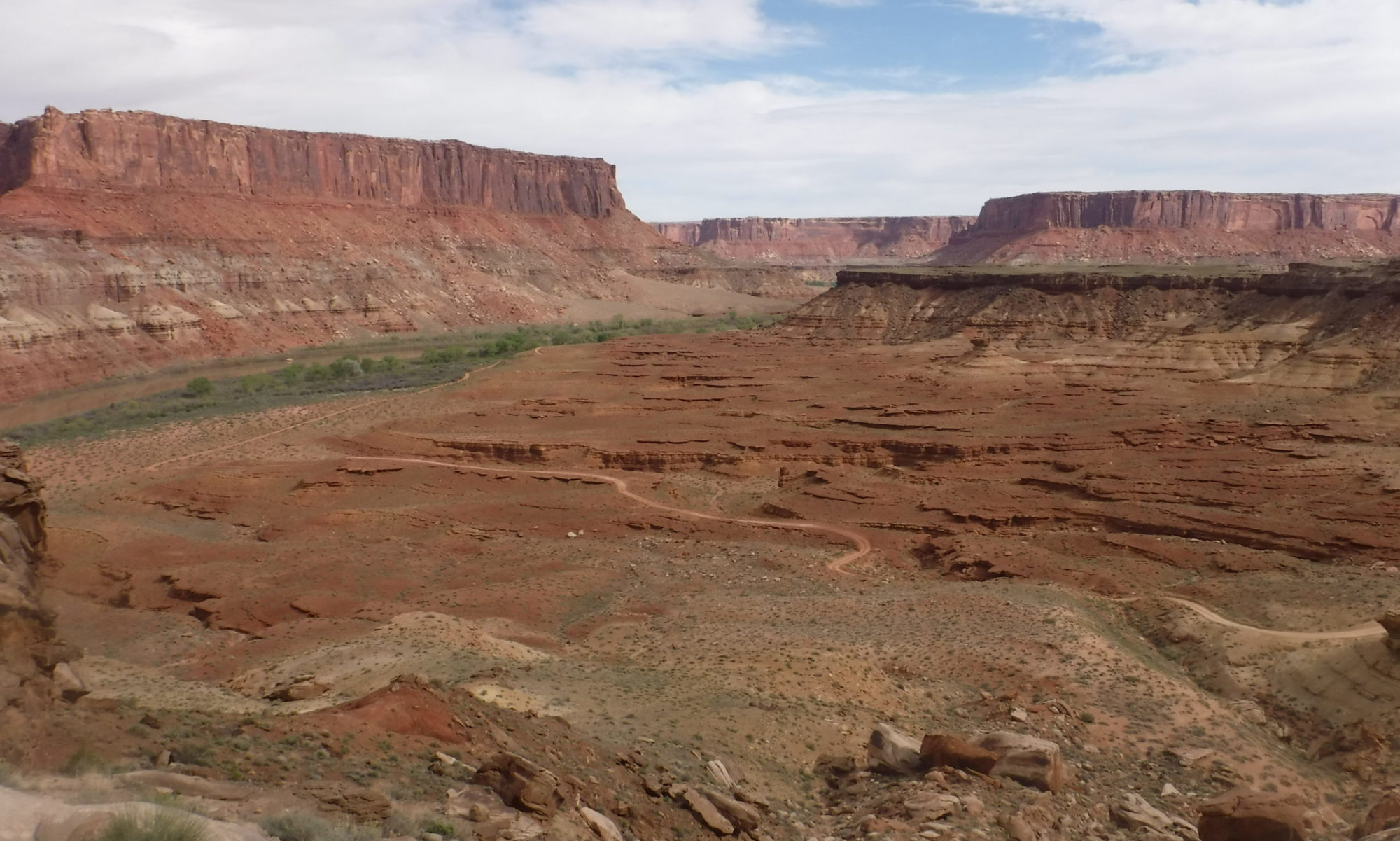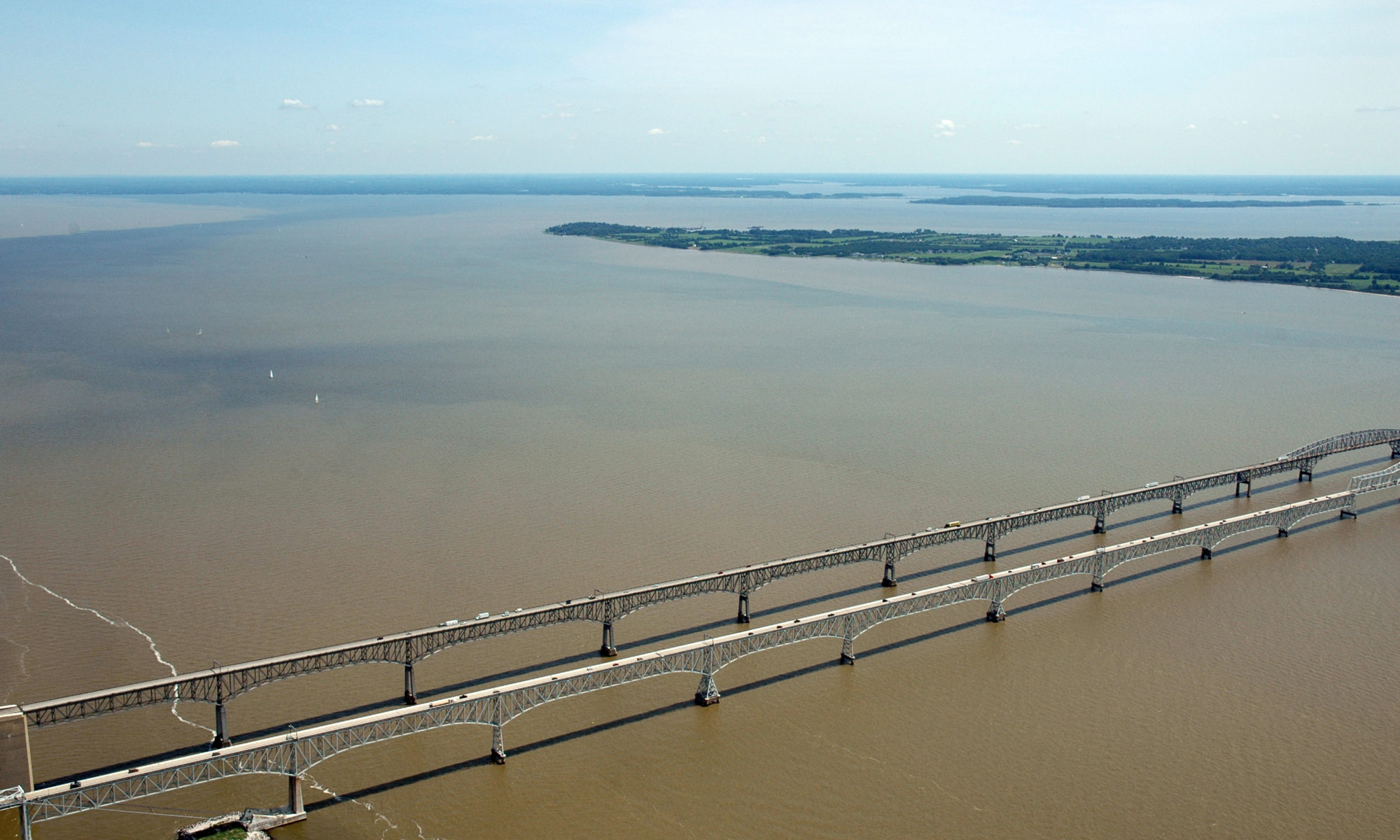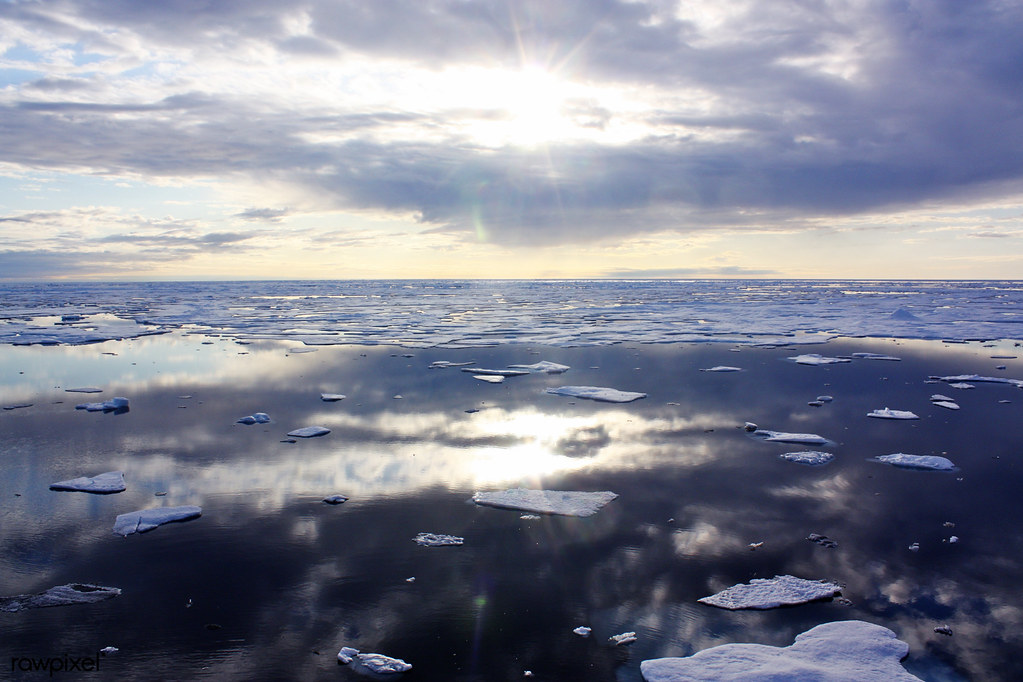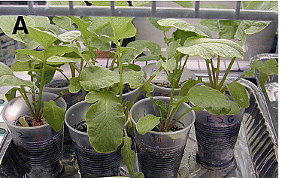Featured Image: Plumes of muddy, sediment-laden water at the Chesapeake Bay Bridge near Annapolis, MD. Photo courtesy of Jane Thomas/ IAN, UMCES.
Paper: Seabed Resuspension in the Chesapeake Bay: Implications for Biogeochemical Cycling and Hypoxia
Authors: Julia Moriarty, Marjorie Friedrichs, Courtney Harris
A memorable feature of the Chesapeake Bay, the largest estuary in the USA, is that the water is very murky and looks like chocolate milk. Former Senator Bernie Fowler has conducted public “wade-ins” over the past 50 years in one of the Bay’s tributaries, seeing how deep the water is before he can no longer see his white tennis shoes, and let’s just say it is never very deep. This is because of the high concentrations of sediment, or small particles of sand and organic material, in the water. Besides making it harder for seagrasses to grow and serving as food for the economically-important oyster, sediment impacts the biological processes that determine how much oxygen and nutrients are available in the water for algae and fish.
Continue reading “Muddy waters lead to decreased oxygen in Chesapeake Bay”




